Jiawei Shen
Michael Pokorny
Automatic Failure Attribution and Critical Step Prediction Method for Multi-Agent Systems Based on Causal Inference
Sep 10, 2025Abstract:Multi-agent systems (MAS) are critical for automating complex tasks, yet their practical deployment is severely hampered by the challenge of failure attribution. Current diagnostic tools, which rely on statistical correlations, are fundamentally inadequate; on challenging benchmarks like Who\&When, state-of-the-art methods achieve less than 15\% accuracy in locating the root-cause step of a failure. To address this critical gap, we introduce the first failure attribution framework for MAS grounded in multi-granularity causal inference. Our approach makes two key technical contributions: (1) a performance causal inversion principle, which correctly models performance dependencies by reversing the data flow in execution logs, combined with Shapley values to accurately assign agent-level blame; (2) a novel causal discovery algorithm, CDC-MAS, that robustly identifies critical failure steps by tackling the non-stationary nature of MAS interaction data. The framework's attribution results directly fuel an automated optimization loop, generating targeted suggestions whose efficacy is validated via counterfactual simulations. Evaluations on the Who\&When and TRAIL benchmarks demonstrate a significant leap in performance. Our method achieves up to 36.2\% step-level accuracy. Crucially, the generated optimizations boost overall task success rates by an average of 22.4\%. This work provides a principled and effective solution for debugging complex agent interactions, paving the way for more reliable and interpretable multi-agent systems.
Seed-Prover: Deep and Broad Reasoning for Automated Theorem Proving
Aug 01, 2025Abstract:LLMs have demonstrated strong mathematical reasoning abilities by leveraging reinforcement learning with long chain-of-thought, yet they continue to struggle with theorem proving due to the lack of clear supervision signals when solely using natural language. Dedicated domain-specific languages like Lean provide clear supervision via formal verification of proofs, enabling effective training through reinforcement learning. In this work, we propose \textbf{Seed-Prover}, a lemma-style whole-proof reasoning model. Seed-Prover can iteratively refine its proof based on Lean feedback, proved lemmas, and self-summarization. To solve IMO-level contest problems, we design three test-time inference strategies that enable both deep and broad reasoning. Seed-Prover proves $78.1\%$ of formalized past IMO problems, saturates MiniF2F, and achieves over 50\% on PutnamBench, outperforming the previous state-of-the-art by a large margin. To address the lack of geometry support in Lean, we introduce a geometry reasoning engine \textbf{Seed-Geometry}, which outperforms previous formal geometry engines. We use these two systems to participate in IMO 2025 and fully prove 5 out of 6 problems. This work represents a significant advancement in automated mathematical reasoning, demonstrating the effectiveness of formal verification with long chain-of-thought reasoning.
CriticLean: Critic-Guided Reinforcement Learning for Mathematical Formalization
Jul 08, 2025Abstract:Translating natural language mathematical statements into formal, executable code is a fundamental challenge in automated theorem proving. While prior work has focused on generation and compilation success, little attention has been paid to the critic phase-the evaluation of whether generated formalizations truly capture the semantic intent of the original problem. In this paper, we introduce CriticLean, a novel critic-guided reinforcement learning framework that elevates the role of the critic from a passive validator to an active learning component. Specifically, first, we propose the CriticLeanGPT, trained via supervised fine-tuning and reinforcement learning, to rigorously assess the semantic fidelity of Lean 4 formalizations. Then, we introduce CriticLeanBench, a benchmark designed to measure models' ability to distinguish semantically correct from incorrect formalizations, and demonstrate that our trained CriticLeanGPT models can significantly outperform strong open- and closed-source baselines. Building on the CriticLean framework, we construct FineLeanCorpus, a dataset comprising over 285K problems that exhibits rich domain diversity, broad difficulty coverage, and high correctness based on human evaluation. Overall, our findings highlight that optimizing the critic phase is essential for producing reliable formalizations, and we hope our CriticLean will provide valuable insights for future advances in formal mathematical reasoning.
Humanity's Last Exam
Jan 24, 2025Abstract:Benchmarks are important tools for tracking the rapid advancements in large language model (LLM) capabilities. However, benchmarks are not keeping pace in difficulty: LLMs now achieve over 90\% accuracy on popular benchmarks like MMLU, limiting informed measurement of state-of-the-art LLM capabilities. In response, we introduce Humanity's Last Exam (HLE), a multi-modal benchmark at the frontier of human knowledge, designed to be the final closed-ended academic benchmark of its kind with broad subject coverage. HLE consists of 3,000 questions across dozens of subjects, including mathematics, humanities, and the natural sciences. HLE is developed globally by subject-matter experts and consists of multiple-choice and short-answer questions suitable for automated grading. Each question has a known solution that is unambiguous and easily verifiable, but cannot be quickly answered via internet retrieval. State-of-the-art LLMs demonstrate low accuracy and calibration on HLE, highlighting a significant gap between current LLM capabilities and the expert human frontier on closed-ended academic questions. To inform research and policymaking upon a clear understanding of model capabilities, we publicly release HLE at https://lastexam.ai.
A Study of In-Context-Learning-Based Text-to-SQL Errors
Jan 16, 2025
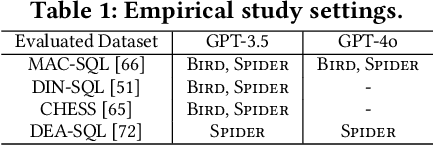

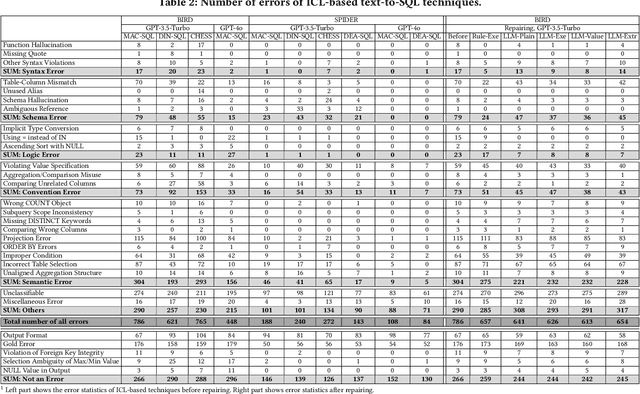
Abstract:Large language models (LLMs) have been adopted to perform text-to-SQL tasks, utilizing their in-context learning (ICL) capability to translate natural language questions into structured query language (SQL). However, such a technique faces correctness problems and requires efficient repairing solutions. In this paper, we conduct the first comprehensive study of text-to-SQL errors. Our study covers four representative ICL-based techniques, five basic repairing methods, two benchmarks, and two LLM settings. We find that text-to-SQL errors are widespread and summarize 29 error types of 7 categories. We also find that existing repairing attempts have limited correctness improvement at the cost of high computational overhead with many mis-repairs. Based on the findings, we propose MapleRepair, a novel text-to-SQL error detection and repairing framework. The evaluation demonstrates that MapleRepair outperforms existing solutions by repairing 13.8% more queries with neglectable mis-repairs and 67.4% less overhead.
Vortex under Ripplet: An Empirical Study of RAG-enabled Applications
Jul 06, 2024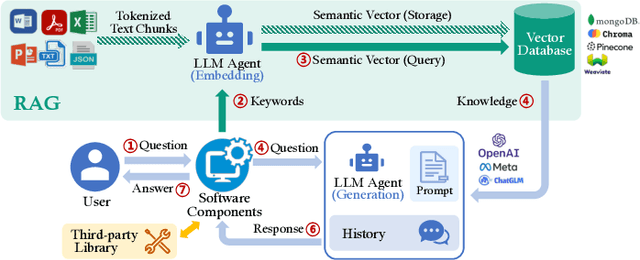



Abstract:Large language models (LLMs) enhanced by retrieval-augmented generation (RAG) provide effective solutions in various application scenarios. However, developers face challenges in integrating RAG-enhanced LLMs into software systems, due to lack of interface specification, requirements from software context, and complicated system management. In this paper, we manually studied 100 open-source applications that incorporate RAG-enhanced LLMs, and their issue reports. We have found that more than 98% of applications contain multiple integration defects that harm software functionality, efficiency, and security. We have also generalized 19 defect patterns and proposed guidelines to tackle them. We hope this work could aid LLM-enabled software development and motivate future research.
Implicit Euler ODE Networks for Single-Image Dehazing
Jul 13, 2020

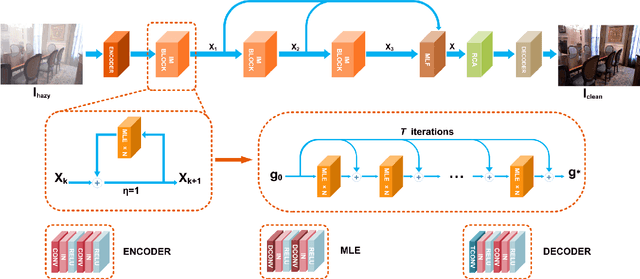
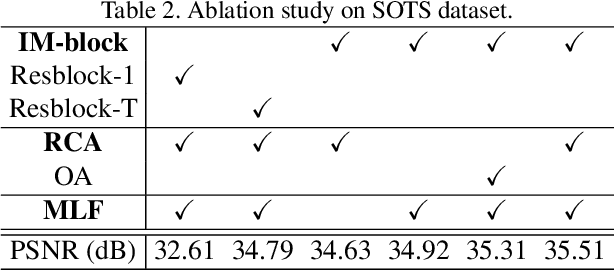
Abstract:Deep convolutional neural networks (CNN) have been applied for image dehazing tasks, where the residual network (ResNet) is often adopted as the basic component to avoid the vanishing gradient problem. Recently, many works indicate that the ResNet can be considered as the explicit Euler forward approximation of an ordinary differential equation (ODE). In this paper, we extend the explicit forward approximation to the implicit backward counterpart, which can be realized via a recursive neural network, named IM-block. Given that, we propose an efficient end-to-end multi-level implicit network (MI-Net) for the single image dehazing problem. Moreover, multi-level fusing (MLF) mechanism and residual channel attention block (RCA-block) are adopted to boost performance of our network. Experiments on several dehazing benchmark datasets demonstrate that our method outperforms existing methods and achieves the state-of-the-art performance.
 Add to Chrome
Add to Chrome Add to Firefox
Add to Firefox Add to Edge
Add to Edge